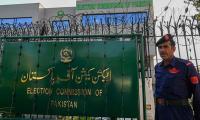A barbaric video of a five-year-old boy beaten to death by his teacher at a Pindi-Bhattian madressah took the country by storm. Our state stood alarmingly silent, and dangerously inactive.
On September 3, 2020 Prime Minister Imran Khan directed the Ministry of Interior to table an anti-torture bill in parliament for approval. While one can appreciate the sentiments behind this announcement, credible doubts linger over whether such statements will materialize into practice. This uncertainty is not unwarranted. It comes from the longstanding record of the ruling party’s manifest opposition towards similar bills that have been cleared by the standing committees of parliament more than a year ago. It is a tale as old as time – that of superficial appeasement.
To understand the urgency of this situation, one needs to unpack the dominant discourse of ‘torture’ which has been limited to the police and law-enforcement realm. The ‘hidden’ incidences of torture that happen at the hands of teachers on young children rarely receive attention, unless an appalling case is highlighted and creates short-lived public outcries. Much of this remains uncountable, unknowable, and frankly deeply entrenched in our daily dealings.
Corporal punishment is one such normalized manifestation of torture. In 2006, the United Nations Committee on Child Rights defined corporal punishment as “any punishment in which physical force is used and intended to cause some degree of pain or discomfort, however light. Most involve hitting ('smacking', 'slapping', 'spanking') children, with the hand or with an implement – whip, stick, belt, shoe, wooden spoon, etc. But it can also involve, for example, kicking, shaking or throwing children, scratching, pinching, burning, scalding or forced ingestion”.
Few will deny that the negative effects of corporal punishment on children are severe and irreversible. But let us remind ourselves. Numerous studies demonstrate how teachers adversely affect the cognitive and intellectual development of children as a result of physical punishment, and that physical punishment incites aggressive behavior or depression among children who may also lose interest in the studies.
Ellen Key, an eminent writer and educationist, finds that “Corporal punishment is as humiliating for him who gives it as for him who receives it; it is ineffective besides. Neither shame nor physical pain has any other effect than a hardening one.” In a similar vein, Dorothy Law Nolte highlights in her poem, ‘Children Learn What They Live’, the long-term impact of aggression towards children, warning that “if a child lives with hostility, he learns to fight”.
One needs to have a few conversations with children to realize how many of them drop out of school because of corporal punishment. Every year, about one-third of children enrolled in primary schools drop out and stop coming to schools. There may be multiple reasons for that, but as per findings of dominant research, one of the main factors keeping these students away from schools is the corporal punishment, physical and mental torture inflicted on them.
When the teacher becomes a symbol of tyranny instead of being a source of affection, children’s motivation to learn and their ability to comprehend is drastically impaired. After receiving beatings or verbal abuse, children not only start disliking the teacher, but also the whole process of learning. It is worth noting the various non-physical forms of aggression that also contribute to children’s low self-esteem and dislike towards learning. Condescending and discouraging language towards children is dangerously normalized.
Corporal punishment is often, rather jarringly, justified using arguments of ‘discipline’ and effective teaching. But, physical punishment in the classroom only points to an instructor’s failure to do their job effectively and create a child-friendly environment that is central for learning. We are quick to attribute results and good grades to the efficacy of teaching. By that logic, we must also hold teaching practices accountable for the dropout rates and the low learning outcomes. Corporal punishment does not solve learning challenges in our classrooms, nor does it help teachers teach well. It reinforces dangerous power dynamics in the classroom and an illusion of ‘discipline’ that disincentivizes learning, and damages self-esteem
While advocating for anti-torture legislation, Mr Prime Minister has referred to Pakistan’s international commitments of Pakistan on this matter, and one sincerely hopes that our foreign qualified PM and his advisers are paying heed to the protection of our children as well. As a signatory to the United Nations Convention on the Rights of the Child (CRC) 1990, and as a responsible nation-state, Pakistan is obliged to take all administrative and legal measures to protect children from violence and abuse. Article 37 of this Convention obligates Pakistan and all other states parties to ensure that: “(a) No child shall be subjected to torture or other cruel, inhuman or degrading treatment or punishment….”.
Despite the public display of such commitments, the government’s sincerity to pursue child rights can be judged from several case studies. Let’s take the Islamabad Child Protection Act enacted in May 2018. Under this law, the federal government is required to establish the ‘Child Protection Advisory Board’, ‘Child Protection Institutions’, and ‘Child Protection and Care Fund’. As per Article 6 of this Act, the federal government was required to establish this Child Protection Advisory Board within three months of enactment of the Act, a deadline that has lapsed two years ago. No evidence of any action is in sight.
Article 2 (r) of this Act declares corporal punishment as part of the violence, as it states: “Physical violence includes corporal punishment and all other forms of torture, cruel, inhuman, or degrading treatment or punishment”.
In another instance on May 20 this year, the Standing Committee on Education approved the ‘Islamabad Capital Territory Prohibition of Corporal Punishment Bill 2019’, presented by this writer but the discussion on this bill was not allowed in the National Assembly and has been withheld for 15 months. Finally, on August 11, when this Bill was presented in the National Assembly for discussion and approval, the members of the ruling party again opposed it and referred it to another committee. Such political musical chairs and delaying tactics to obstruct legislation only demonstrate how personal agendas are taking precedence over duty.
Millions of children in Pakistan suffer and are deprived of their fundamental right to education due to the harmful practice of corporal punishment. An uncountable number suffer an irreparable loss of self-esteem and a damaged sense of self. When will our policymakers, media, judiciary and parents raise their voice against corporal punishment, and when will the treasury benches in parliament realize the urgency of banning corporal punishment in institutions? This should not be a divisive issue.
The writer is a member of the National Assembly of Pakistan, and chairperson SDGs Child Rights Special Committee.
Twitter: @MehnazAkberAziz
As usual, any such deal, aiming to resuscitate ailing economy, brings to fore urge and resolve to halt further...
A representational showing sticky notes on a board. — Unsplash/FileThere are some common themes from the lives...
Whether the Daanish Schools effort has been able to live up to its principles or not may be debatable
According to the federal government, last year 653,100 people experienced homelessness on a single night in America
Another advantage for Pakistan is the enhanced teledensity and internet penetration
Both media spheres need to dovetail in amplifying the urgency of addressing climate change at the local, national, and...







